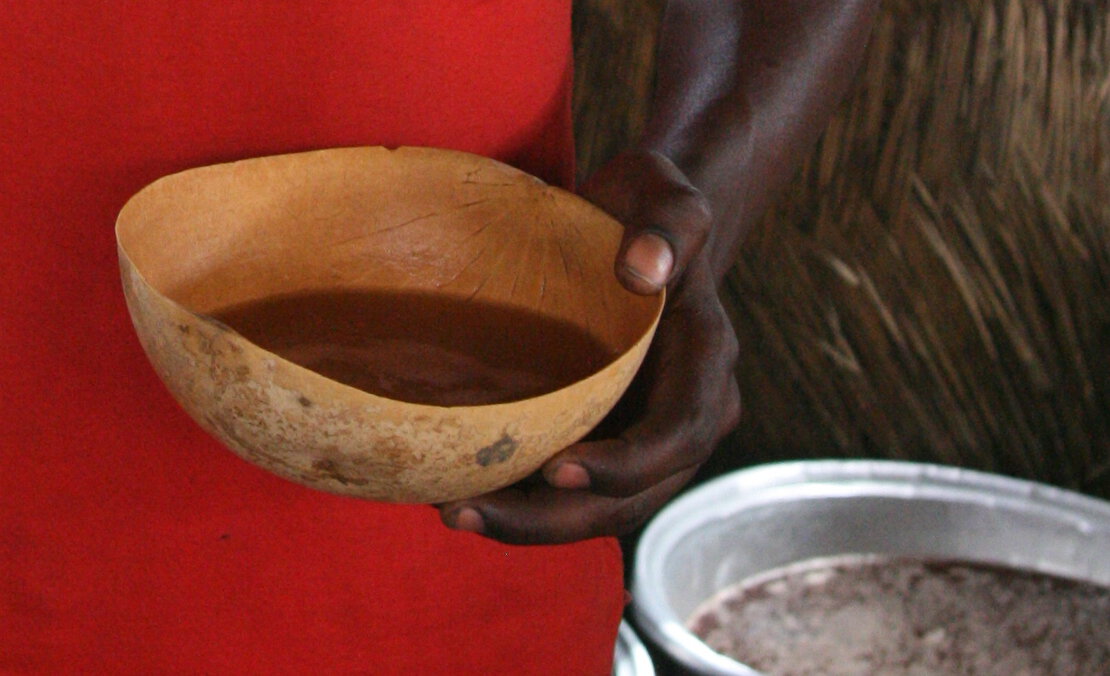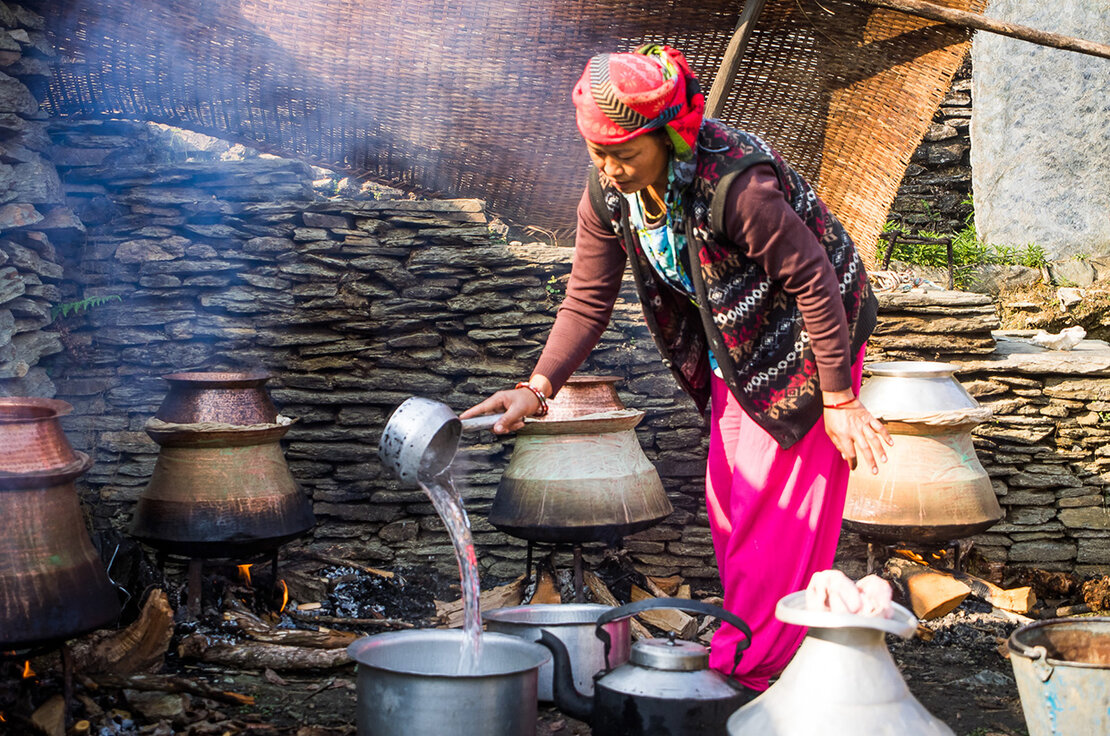Is Maggi seasoning sauce gluten free?
Updated January 2024. Maggi seems to have updated their Polish Maggi variety and it now lists wheat..

Millet is a gluten free small-seeded cereal from the grass family. Millets have been cultivated for thousands of years and have a long history as a food source in much of the world. For more information about millet, you can find our millet flour article here.
There are tons of interesting millet-based drinks and fermented foods because of the long history of cultivation. Many of these recipes are ancient, but millet is also being used in modern brewing processes to make gluten free beer in the west. If you’re a brewer, you can purchase malted millet (and other gluten free grains) directly from Grouse Malthouse. They offer a huge variety of millet malts to fit many styles of gluten free brews.
Because there are so many different millet-based beverages and ferments, these are broken down into their own sections below. Within the individual sections, you’ll find a description and history of the food, as well as a recipe to make it yourself (if you dare!). This great article offers more information about the specific types of bacteria, yeast, and unique cultures that create these beverages.

Boza is a malt drink that is made from millet in Turkey, Bulgaria, and Romania. It’s a style of malt flour beverage that can also be made of other cereal grains in different regions. The drink has a thick texture and slightly sweet and acidic flavor due to the lactic acid produced during fermentation. It has a low alcohol content of around 1%. The drink is high in calories and was traditionally served in the winter because it spoils when exposed to warm temperatures. Historically, it was an important food source during famines because it is nutritious, rich, and easy to produce. The lactic acid and beneficial bacteria produced during fermentation also helps to balance intestinal flora and improve digestion.
Boza from Turkish Style Cooking
The history of boza and a basic recipe from The New Gastronome
Beer is commonly made from millet in Africa and has many different names within the region. It’s called ajon or malwa in Uganda, tchouk in Togo, chibuku in Southern and Central Africa, and dolo in Burkina Faso, just to name a few. Millet beer was also historically produced by the Ainu people in Northern Japan and Russia. Millet beer tends be nuttier and slightly sweeter than barley-based beer. The process for making this beer is roughly the same as any beer, but the customs and traditions surrounding the beer vary depending on the region of consumption. Throughout Africa, the beer is served in calabash gourds. Millet beer is gaining popularity in the rest of the world because it’s affordable and great for gluten free brewing.

Brewing with millet from Scott Janish
Millet and sorghum brewing history from Beer and Brewing

Burukutu is a traditional alcoholic drink that is consumed in Ghana, Nigeria, Kenya, Ethiopia, Burundi, and Republic of Benin. It’s made by local women and is a popular alternative to beer in these regions. A mixture of millet and guinea corn is used to create the beverage and it’s estimated to be between 4%-10% alcohol. The drink is dark colored and slightly vinegary and sweet.
Ogi and Uji are fermented millet porridges from Nigeria and Kenya respectively. The whole grains are soaked for about 3 days before wet-milling and sieving. Once milled, the paste is fermented for another 3 days to allow it to sour. Once fermentation is complete, the paste is blended with additional water and made into a porridge. Ogi tends to be a thicker consistency, whereas uji is closer to the texture of gravy.
Ogi fermented millet porridge from Fermenting for Foodies
Uji from Jayne Rain
Tongba is a whole grain millet drink that was traditionally prepared by the Limbu sherpas of Nepal for religious ceremonies and celebrations, but the drink quickly spread to Tibet, Bhutan, and regions of India as well. Tongba is actually the name of the vessel used to serve it. The drink is known as mandokpenaa thee or jandh, and is prepared by cooking and fermenting whole grain millet. Once the millet has been properly fermented (a process completed by a specific combination of lactic acid, bacteria, yeast, and mold), it is added to the cup and hot water is poured to the brim. After the hot water and millet have steeped for a few minutes, a straw with a filter on the end is used to drink the brew. Once the water is gone, more hot water is added for a new round. This process is repeated until all of the alcohol has been pulled from the millet, which could take 4-5 rounds. The flavor of tongba has been described as milky, bready, and smooth, with a low alcohol content that can strangely feel quite potent. Wide World of Wine has a descriptive post about tongba that goes a bit more in-depth regarding the experience of consuming this drink.
Tongba millet gruel from Arishtam
Tongba from Open Drinks

The Limbus people of Nepal also produce a homebrewed beverage called raksi that is served during celebrations and religious rituals, but is also popular among the general public in Nepal. This distilled drink can be made from either kodo millet or rice, depending on the recipe. The flavor has been described as similar to the smoothness of sake, but will a strong burning sensation and high alcohol content. Aila is a similar homebrewed and distilled drink that is important to the Newari people of Nepal. To learn more about this history, I recommend reading this post from Roads and Kingdoms.
Homemade millet whiskey video from Foody with RT
Millet wine video from nepalkakura channel
Ragi koozh is a fermented drink or porridge made from millet flour that is served for breakfast in Tamil Nadu. It has a reputation for being bland, cheap, and cooling for hot weather. Nevertheless, it’s nutritious and a great source of probiotics.
Ragi koozh from The Blurry Lime
Aadi ragi koozh from Rak’s Kitchen
Mahewu is similar to koozh, but has a longer fermentation time and is instead popular in Zimbabwe. The base of this drink is often a mixture of millet and corn, and the consistency will be like a drinkable yogurt with a light sourness. Sugar is added to taste. This drink is not alcoholic and is used as a food for weaning infants.
Finger millet malt drink from Zimbo Kitchen
African grain kombucha from Karma Cultures
Millet wine is a homemade Taiwanese drink that is served during festivals and as an offering to the original Aboriginal people of the island. It is golden in color, with a gentle sweetness and some tanginess. Medicinal herbs are often included in the recipe for Fenzhou millet wine. The wine is brewed from a base of millet and a yeast cake culture obtained from grains, so it is unfortunately not gluten free in many cases. However, millet wine can also be made from kojis sourced from gluten free grains, such as millet or rice. In these cases, the resulting beverage would be gluten free.
The science of fermentation millet wine from Play Science with Master Zheng
Millet wine and rice wine experimentation from Alec Story
Turning trash into delicious things: guide to making koji from Madfeed
Bushera is a fermented millet and sorghum beverage made in Uganda. The grains are first soaked in running water, like a stream, then sprouted and fermented. There are both sweet and sour bushera varieties. The sweet variety should be pale brown, sweet, and medium viscosity. The sour bushera should be slightly sour, not overly watery, and mildly alcoholic (around 1%).
Fura is made of millet flour and fermented milk and is eaten in Western Africa. The recipe typically includes sugar, ginger, cloves, and chili for flavor. Once the millet flour and spices have been cooked together with water to form a paste, it is shaped into balls and coated in millet flour. These balls can then be eaten directly in a bowl of cultured milk or can be broken up and blended with cultured milk to form a drink.

Hausa koko is a popular hot porridge that is served for breakfast or as an afternoon snack in Ghana. It is a slightly sour and sweet and is served fried bean dough known as koose. Fura balls can be used as a shortcut to prepare hausa koko.
Hausa kok and kose akara from Dobby’s Signature
Hausa koko spicy millet porridge from The Spruce Eats
Kunu zaki is a non-alchoholic drink that is popular in Nigeria. It’s considered a style of horchata (a grain-based milky drink) and is made with sprouted millet, sweet potato, ginger, and cloves. De-hulled millet is soaked overnight, then pounded to a paste with the sweet potatoes and spices. A two step process is then used to convert the paste to a cold beverage.
Hausa kunu zaki video from Tasty City
Kunu zaki from Nigeria Galleria

Zoomkoom is a traditional drink of Burkina Faso and can be translated as ‘flour water’. It is served when welcoming guests. The drink is made of a blend of pineapple, ginger, tamarind, sugar, and millet flour. The taste is refreshing, spicy (from the ginger), sweet, and quite high in calories due to the addition of millet.